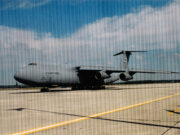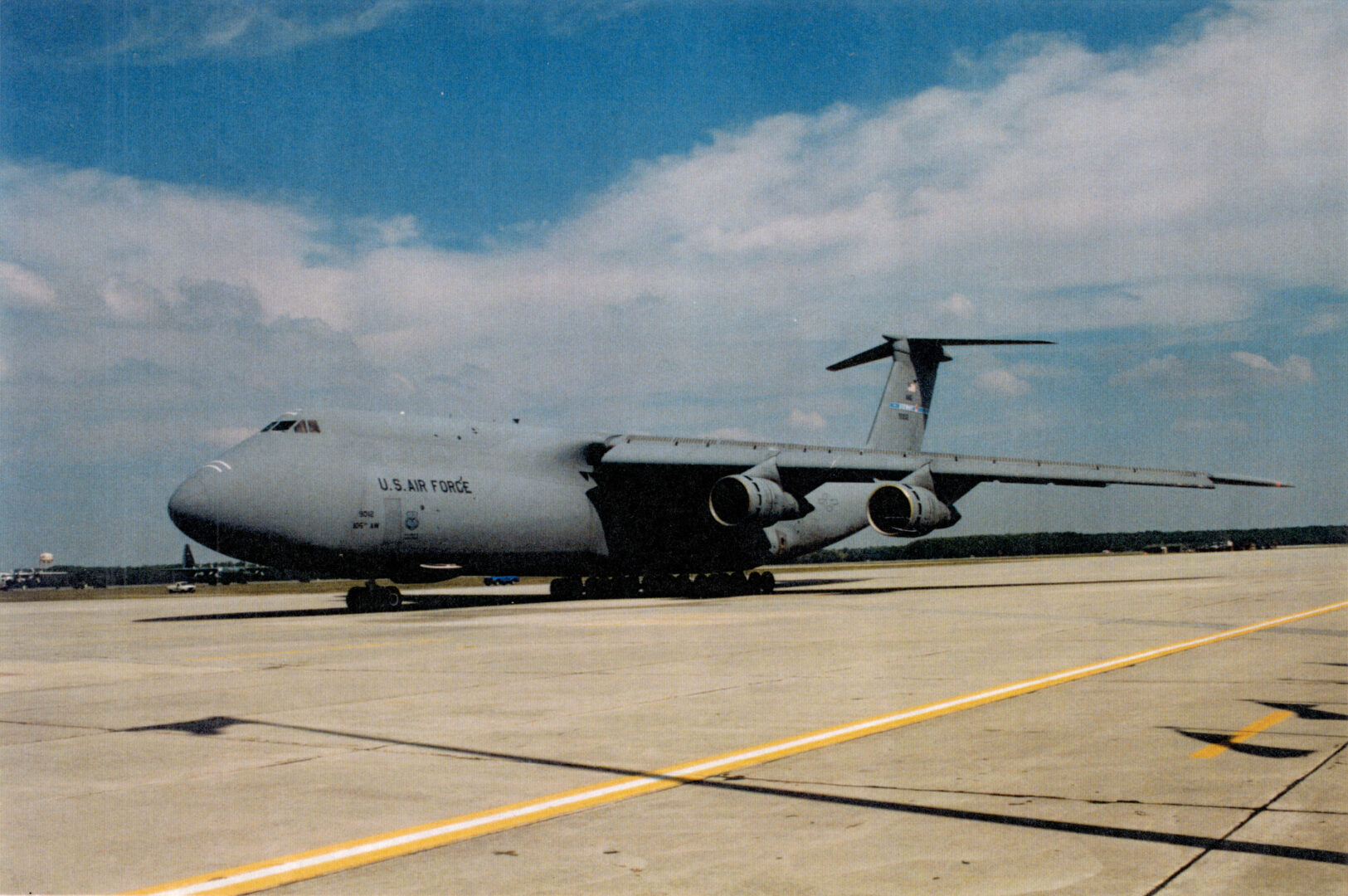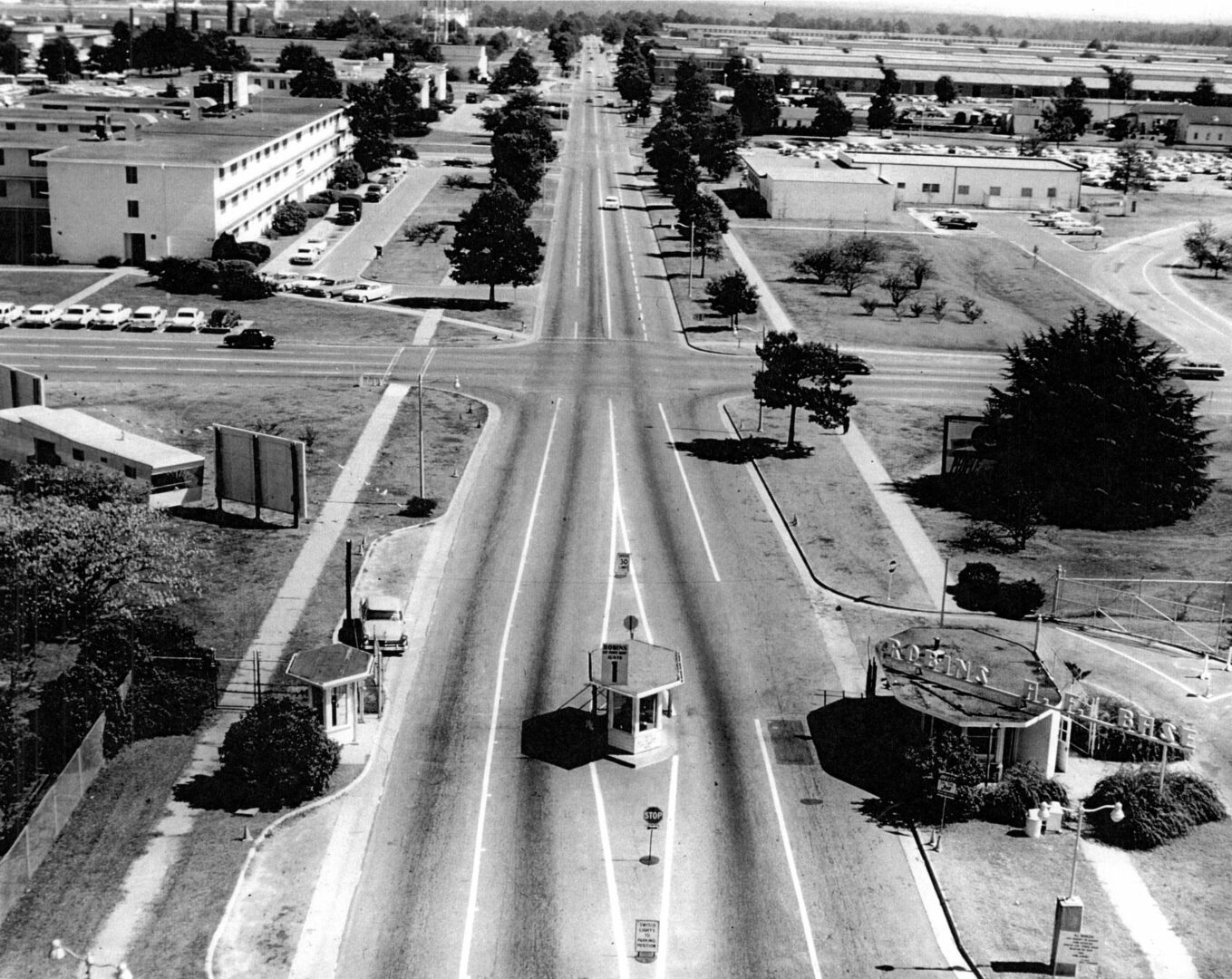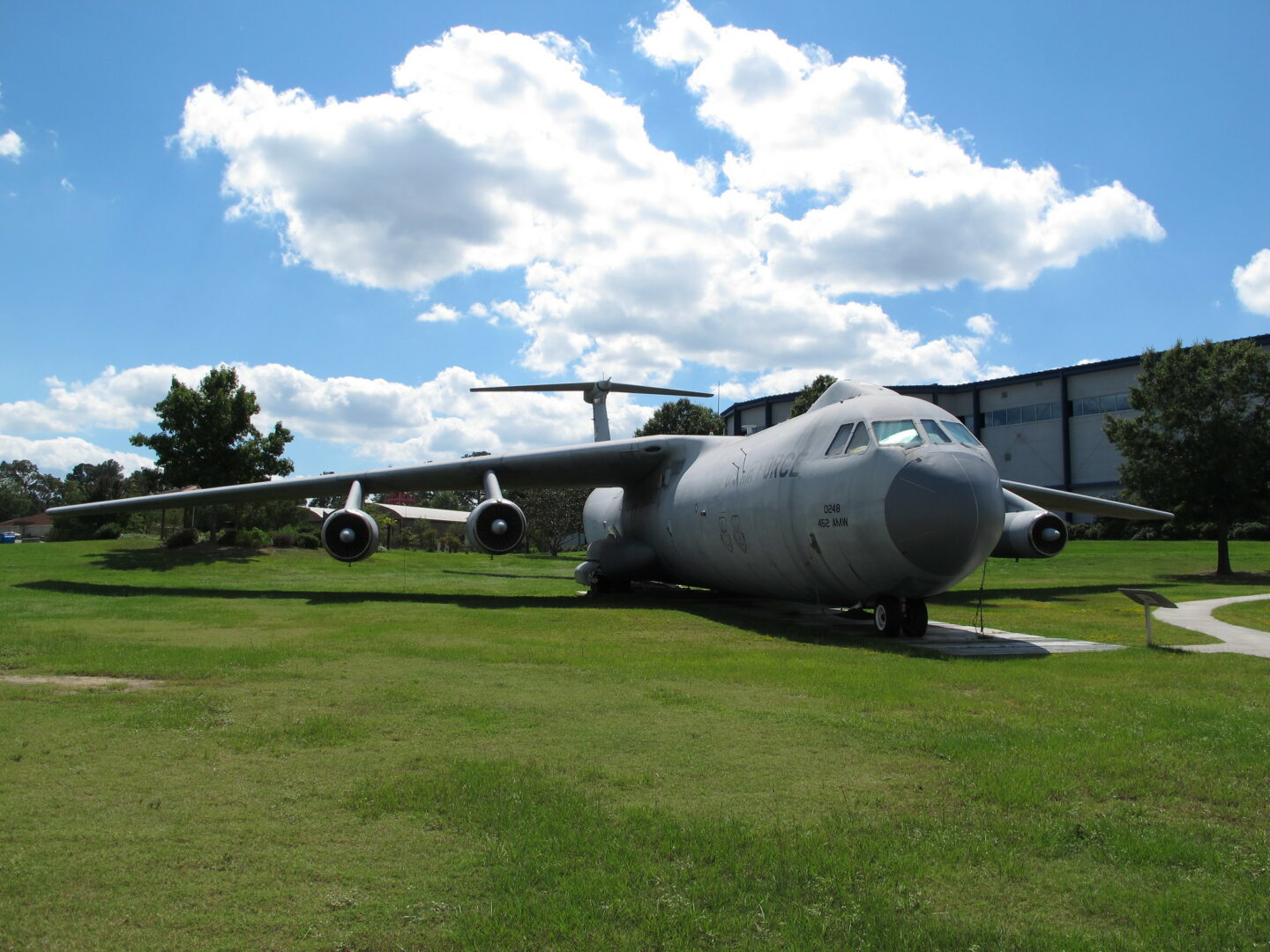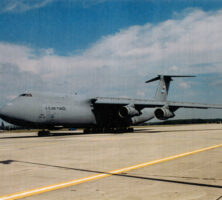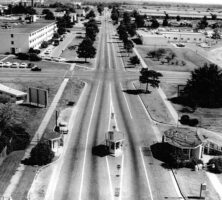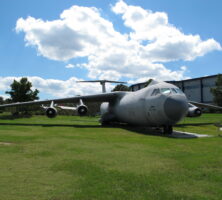Robins Air Force Base is Georgia’s largest industrial installation and is located in Warner Robins, sixteen miles south of Macon. Both the base and the town were named for Brigadier General Augustine Warner Robins (1882-1940), one of the first logistics specialists and generals of the Army Air Corps.
Early History
The 1935 Wilcox-Wilson bill provided for construction of new army air logistics depots, and in the early 1940s Macon civic leaders, led by Mayor Charles L. Bowden and supported by Congressman Carl Vinson, convinced the War Department to locate an airfield near Macon. In June 1941, after much competition, the War Department approved the construction of a depot in middle Georgia dairy-farm country near the Southern Railroad whistle-stop of Wellston. The site was chosen because of its flat lands, artesian water, proximity to a main rail line, and abundant and cheap land and labor.
Construction officially started with groundbreaking ceremonies on September 1 on a 3,108-acre tract. Macon city fathers, supported by Wellston leaders, obtained property rights from the original owners. The Army Air Forces (AAF) later bought an additional 2,700 acres for the cantonment area, civilian barracks, and the pistol/rifle range. Even though Wellston was in Houston County, Bibb County leaders spent more than $100,000 to obtain Robins Field by increasing city business license taxes and county ad valorem taxes. Spurred on by the Japanese attack on Pearl Harbor in December 1941, construction on the industrial and cantonment areas was completed by August 31, 1942. The second and third phases were completed the following April.
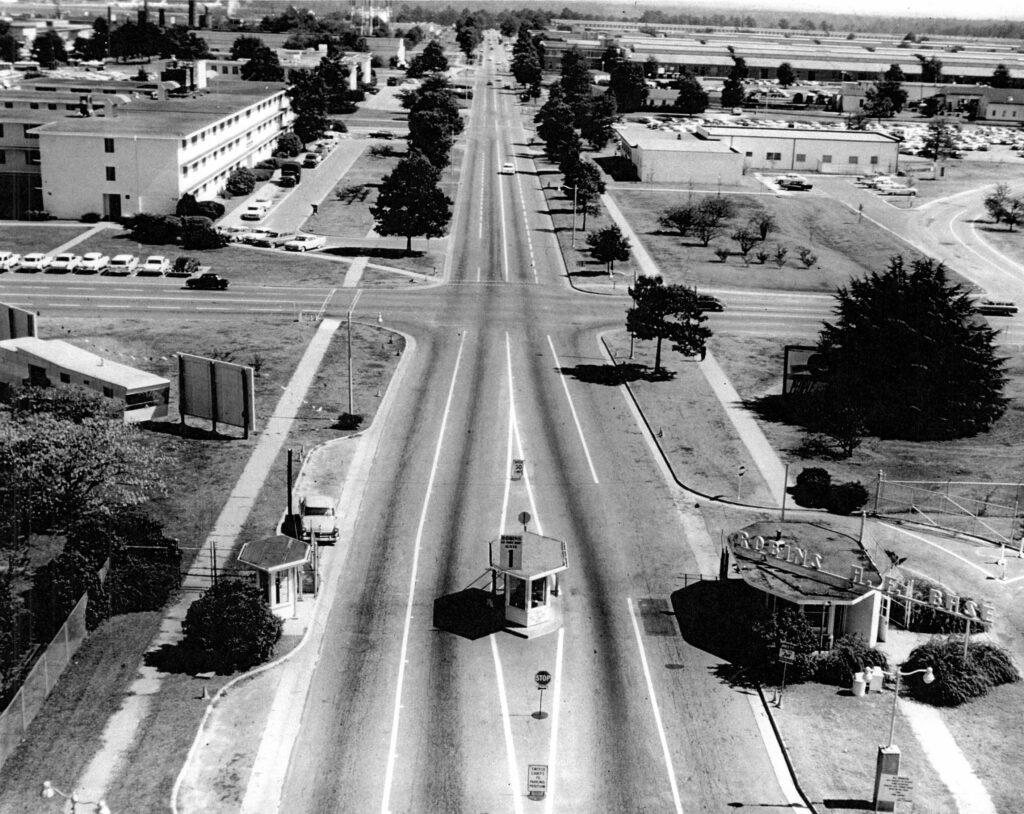
Known as the Georgia Air Depot in the beginning, the depot has undergone many name changes. During World War II (1941-45) it was redesignated seven times, acquiring “Warner Robins” in the fifth version of its name, when the town of Wellston was renamed to honor General Robins.
Throughout World War II 23,670 employees repaired almost every kind of AAF aircraft, including B-17s, C-47s, B-29s, B-24s, P-38s, P-47s, and P-51s. Its training facilities turned out nearly 60,000 field repair mechanics for every theater of war. The workforce supplied every kind of part necessary to keep AAF planes flying, especially spark plugs. It also maintained thousands of parachutes, aircraft electronic and radio systems, and AAF small arms.
Since World War II
By March 1946 only 3,900 employees remained. The Berlin Airlift and the Korean War (1950-53) restored the workforce to 17,697 by December 1952. Robins played a key role in the Vietnam War (1964-73), supplying troops and materiel through the Southeast Asian Pipeline and modifying AC-119G/K and AC-130 gunships. Also playing a role were the C-141, the C-130, the C-123, and the C-124 cargo aircraft—all maintained at Robins. In 1973 these same C-141s supported the resupply of Israel in the Yom Kippur War. In October 1983 C-130s from Robins supported U.S. forces in Grenada.
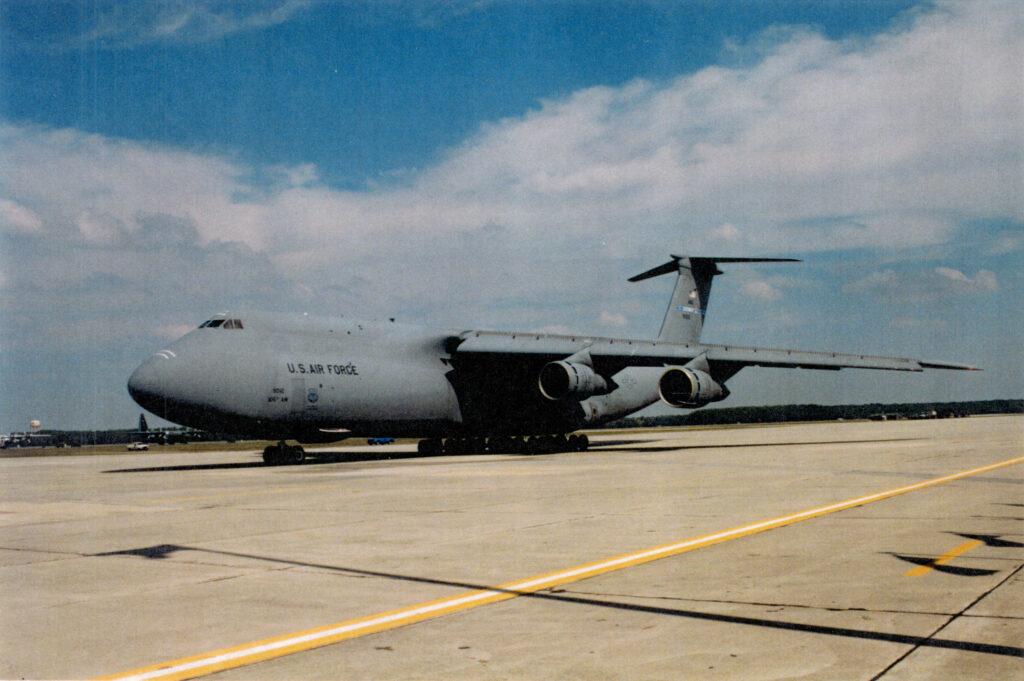
In 1990-91, during the Persian Gulf War, Robins provided record numbers of parts, repairs, and personnel to coalition forces in the Persian Gulf. Robins-maintained F-15 Eagles and the E-8 Joint STARS played key roles in defeating the Iraqi military. In March–June 1999, during Operation Allied Force, the same employees and weapon systems played a decisive role in defeating the forces of Yugoslavian president Slobodan Milosevic.
Social and Economic Impact
In 2006 Robins Air Force Base had 6,329 military and 13,431 civilian employees. It is home to more than fifty organizations, including the Warner Robins Air Logistics Center (WR-ALC), Headquarters Air Force Reserve, the 78th Air Base Wing, the 19th Air Refueling Group, 5th Combat Communications Group, 93rd Air Control Wing, and the Air National Guard’s 116th Bomb Wing. The WR-ALC manages the C-5 Galaxy, the F-15 Eagle, the C-141B/C Starlifter, the C-130 Hercules, special operations forces aircraft, the E-8C Joint STARS, the U-2, air force vehicles, helicopters, and several key missile and avionics systems. It is an air force avionics center, the Air Force Small Arms Center, and a major location for the development of high technology and automated industry. Since 1958 center personnel have managed foreign military sales programs for thirty to seventy countries.
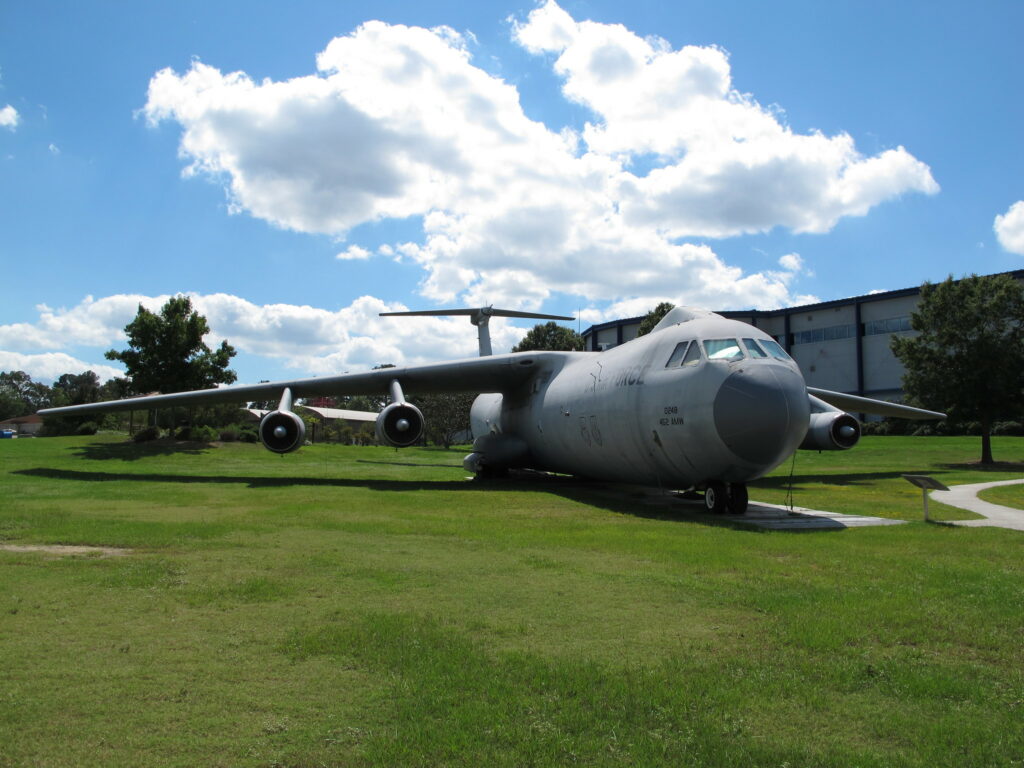
The base is situated on 6,935 acres, with 2,200 acres of wetlands and 350-400 acres of upland forest, which includes hardwoods and planted pines. Among the species of plants and animals on base are 400 plant species, 39 mammals, 110 birds, 60 fish, 34 reptiles and 26 amphibians, and 411 insects. In addition there are 58 archaeological sites, including 16 that are eligible for listing on the National Register of Historic Places.
College courses are offered at the Robins Residence Center, a satellite campus of Macon State College.
Robins AFB has the largest runway in Georgia and is capable of accommodating the world’s largest aircraft, including the C-5B and NASA’s space shuttle piggybacked on a Boeing 747. The replacement value of the base is $5.7 billion.
The Museum of Aviation, begun in 1981, has four major structures on forty-three acres and ninety historic aircraft. It has become a major regional educational and historical resource that hosts 700,000 visitors annually.
In the 1990s Robins AFB awarded between $2 billion and $4 billion in annual contracts; between $200 million and $400 million of that went to Georgia businesses. Robins’s total economic impact on middle Georgia was $4.2 billion in 2005. When the army air forces came to Wellston at the beginning of World War II, forty-seven families lived in the area. All twenty-five middle Georgia counties have grown and experienced economic stability as a result of the presence of Robins Air Force Base.


